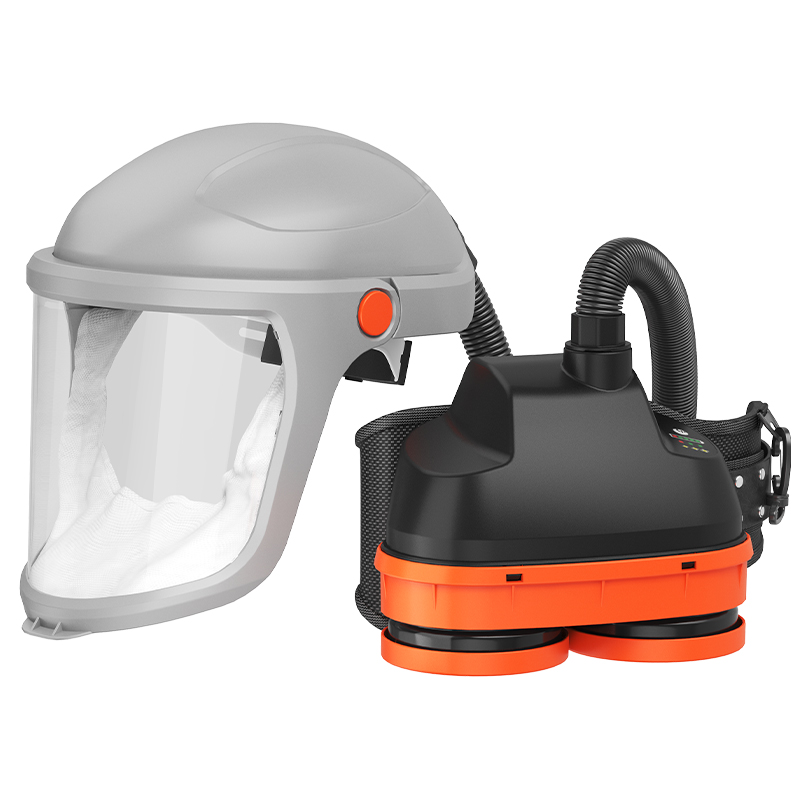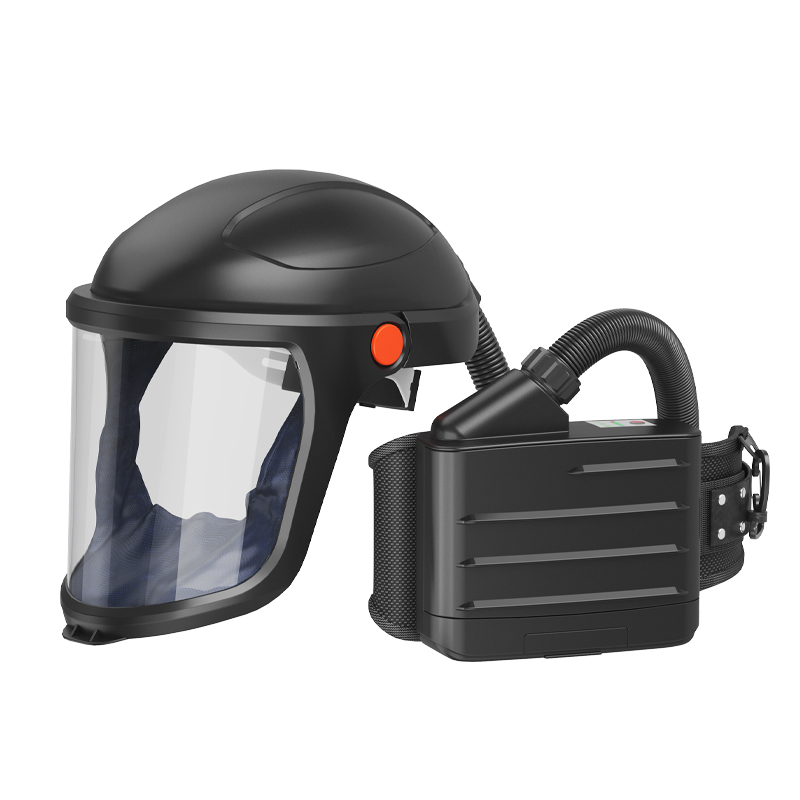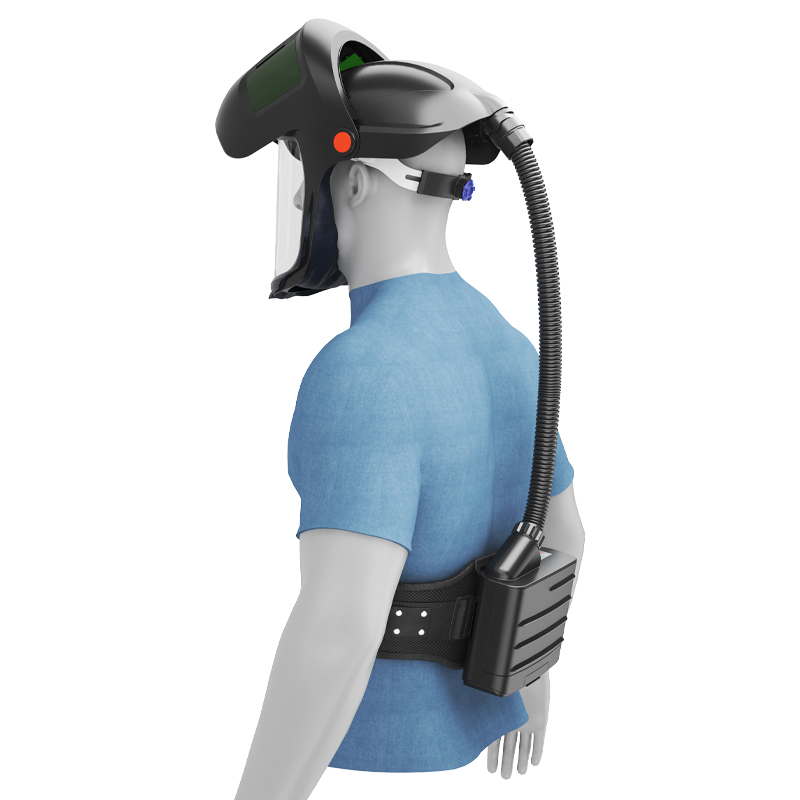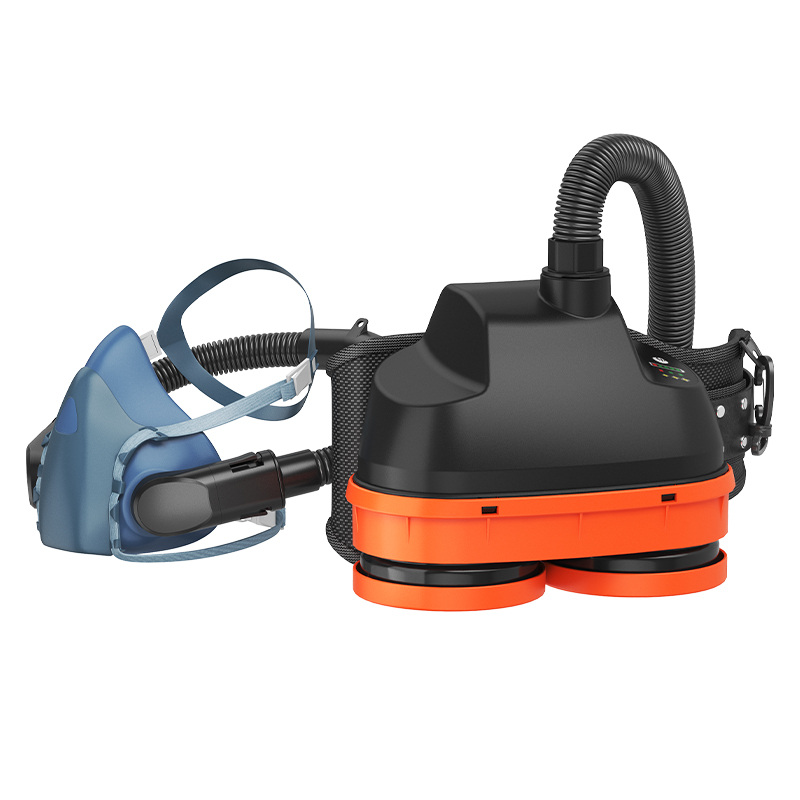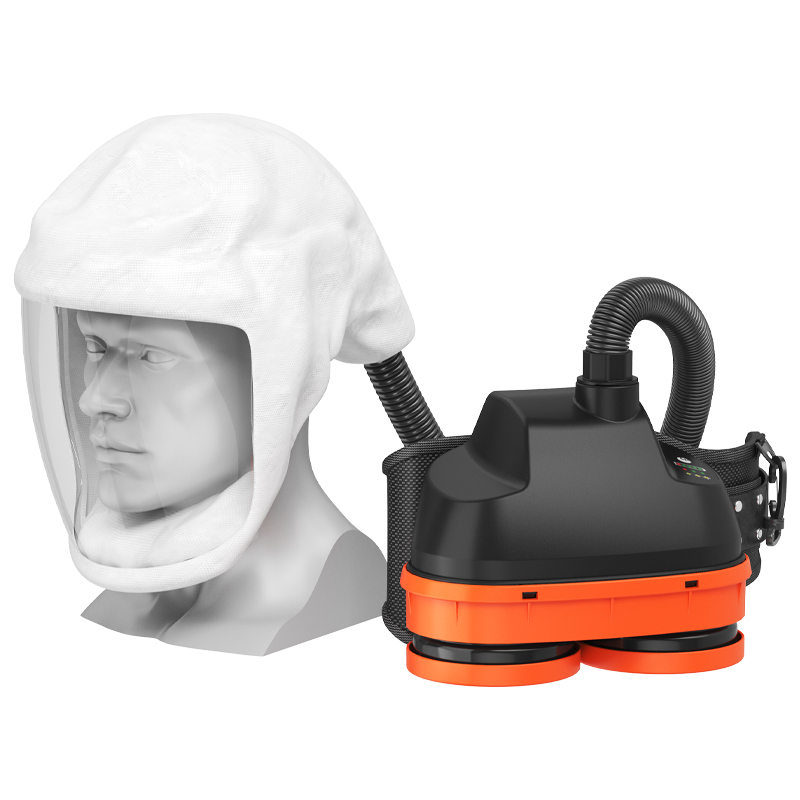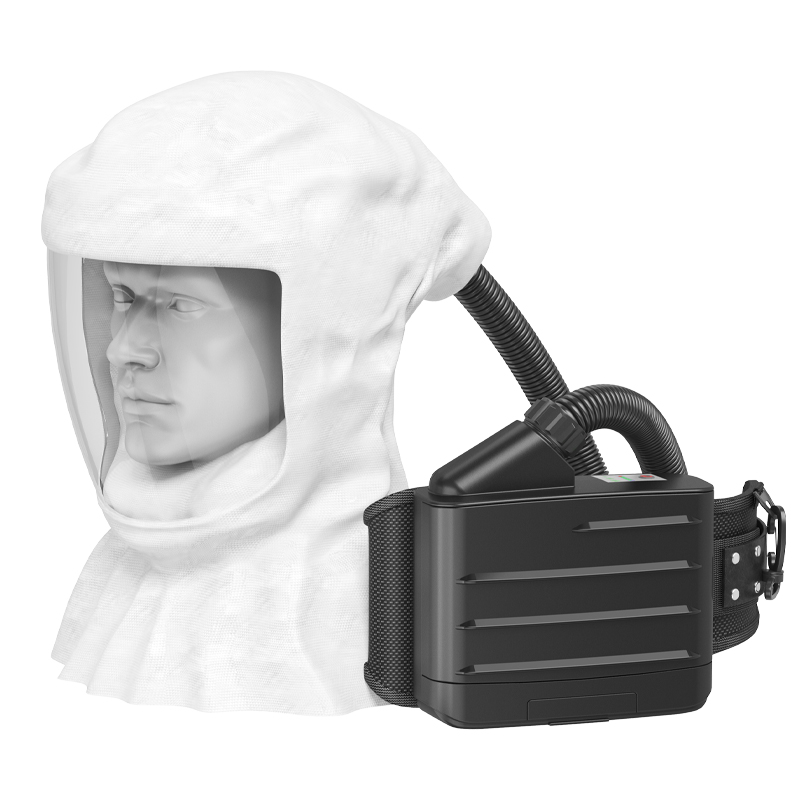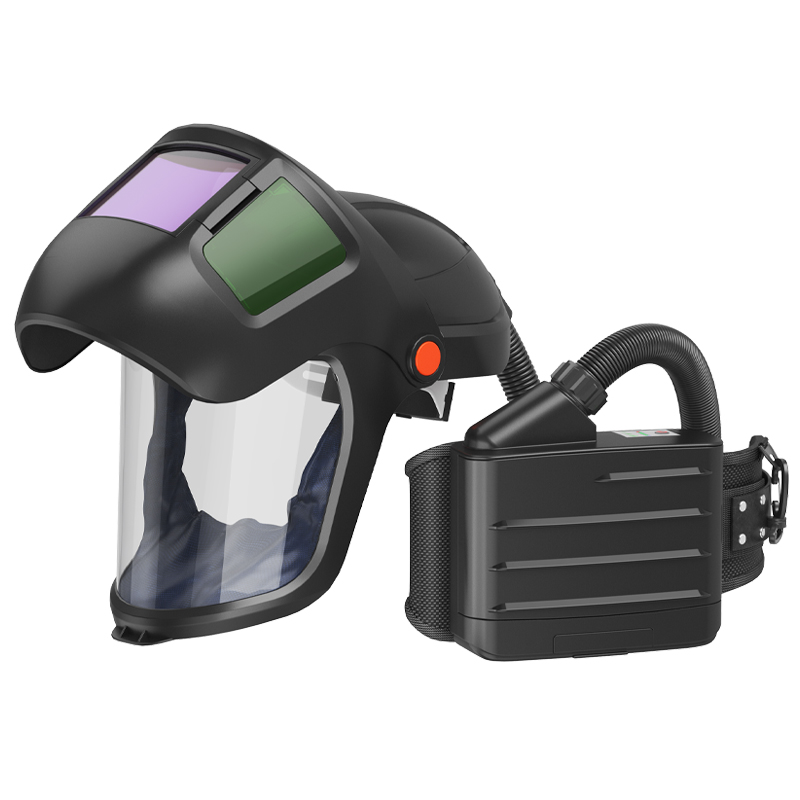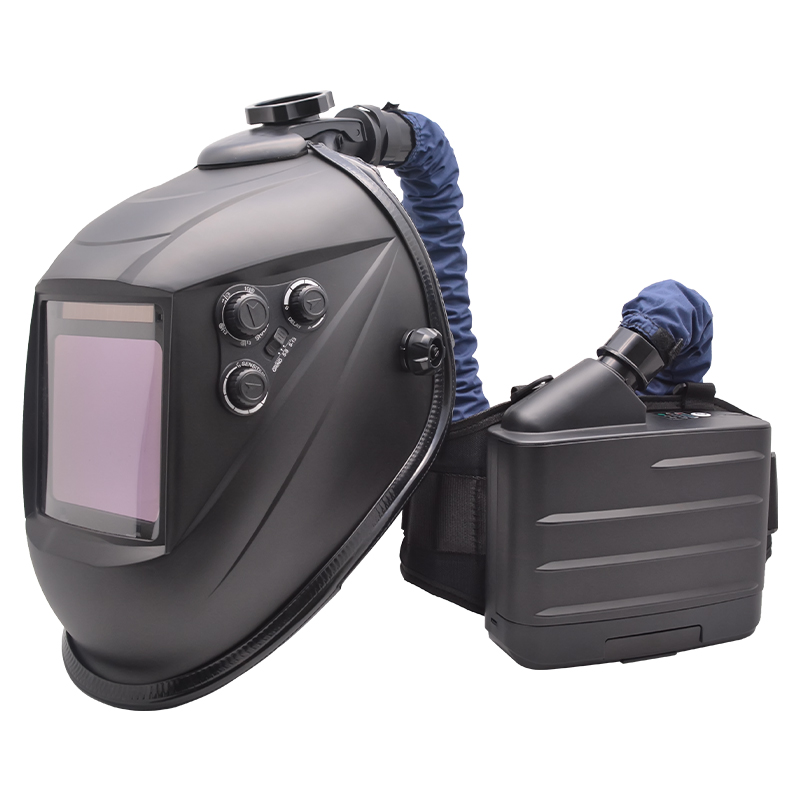Dec 12, 2025
In automotive painting, the gloss and smoothness of the paint finish are the core process goals, but the potential pollutant risks deserve more attention. From rust removal with primer, color application with base coat to sealing with clear coat, the entire process generates dual pollution: on one hand, paint mist particles with a diameter of 0.1-5 microns, which can be directly inhaled and deposited in the lungs; on the other hand, organic vapors volatilized from paint solvents, such as toluene, xylene, ethyl acetate and other Volatile Organic Compounds (VOCs), which not only have a pungent odor but also may damage the nervous and respiratory systems with long-term exposure. Ordinary dust masks can only block large particles, while activated carbon masks have limited adsorption capacity and are prone to saturation. Only toxic gas cartridges, with their targeted filtration design, can simultaneously block particles and organic vapors, serving as the "core line of defense" for automotive painting protection. Today, we will break down why toxic gas cartridges are a must for automotive painting and whether the popular A2P3 cartridge is truly suitable.
The "composite pollution" characteristic of automotive painting determines that toxic gas cartridges are not an "optional piece of equipment" but a "necessary configuration"—especially when paired with a battery powered air respirator (PAPR). Firstly, the synergistic hazards of paint mist particles and organic vapors are far greater than single pollution—fine particles act as "carriers" for organic vapors, penetrating deeper into the respiratory tract and intensifying toxic infiltration. Ordinary protective equipment cannot handle both: single-layer dust masks have no blocking effect on organic vapors, while pure organic vapor filter boxes will be clogged by paint mist, leading to a sharp drop in filtration efficiency. Secondly, the continuity of painting operations requires stable and durable protective equipment. Toxic gas cartridges adopt a dual-layer structure of "particle pre-filtration + chemical adsorption": paint mist is first intercepted by the pre-filtration layer to avoid clogging the adsorption layer, and activated carbon and other adsorbent materials efficiently capture organic vapors, ensuring stable protection during hours of continuous operation when used with a PAPR. More importantly, compliant toxic gas cartridges must pass professional certifications , with their filtration efficiency and protection range strictly tested to meet the safety and compliance requirements of painting scenarios.
The core logic for selecting the right toxic gas cartridge is to "accurately match the type and concentration of pollution", which requires first understanding the model coding rules of toxic gas cartridges. The model of a toxic gas cartridge usually consists of "protection type code + protection level". For example, the common "Class A" stands for organic vapor protection, "Class P" for particle protection, and the number after the letter represents the protection level (the higher the number, the higher the level). The core pollution in automotive painting is "organic vapor + paint mist particles", so the selection must focus on composite protection types that cover both "organic vapor + particles" rather than single-function cartridges. Combining industry practice and pollution characteristics, the A2P3 cartridge is precisely the core model most suitable for automotive painting. In addition, flexible adjustments are needed: for high-concentration scenarios such as closed spray booths, upgrade to A3P3; for water-based paint spraying, since the paint mist particles are finer, ensure P3 level, but the basic composite protection framework still takes A2P3 as the benchmark. Blindly choosing single-type or low-level toxic gas cartridges is equivalent to "passive exposure" to pollution risks.
As the "golden-matched model" for automotive painting—especially when used with a papr respirator system—the adaptability of the A2P3 cartridge stems from its precise matching to painting pollution. Let's first analyze the core value of the model: "A2" is for medium-concentration organic vapor protection (common painting solvents such as toluene, xylene, and ethyl acetate all have boiling points higher than 65°C, fully covering the protection range of A2), and "P3" achieves high-efficiency particle interception (filtration efficiency ≥99.95%, with nearly 100% interception rate for 0.1-5 micron paint mist particles). In terms of scenario adaptability, whether it is local touch-up painting in auto repair shops, whole-vehicle painting in small spray workshops, or general operations with mainstream oil-based or water-based paints, the concentration of organic vapor is mostly at a medium level, and the diameter of paint mist particles is concentrated at 0.3-5 microns, which perfectly matches the protection parameters of A2P3 and the air supply capacity of a standard PAPR. In practical application, its dual-layer structure of "pre-filtration layer + high-efficiency adsorption layer" can first intercept paint mist to avoid clogging the adsorption layer, extending the continuous service life to 4-8 hours, which fully meets the daily painting work duration. The only exception: when spraying high-concentration special solvent-based paints (such as imported high-solids metallic paints) or continuous operation in fully enclosed spaces, upgrade to A3P3, but A2P3 remains the best choice for over 90% of conventional painting scenarios when paired with a PAPR.
After selecting the core model A2P3, correct usage is essential to maximize protection value. Three key details require focus: first, matching supporting equipment—must be used with a personal air purifying respirator or airtight gas mask, and pass an airtightness test to ensure no gap leakage, avoiding "qualified cartridge but failed protection"; second, establishing a saturation early warning mechanism—when a solvent odor is smelled or breathing resistance increases significantly, replace immediately even if the theoretical service life is not reached. The continuous use limit of A2P3 under medium concentration is usually no more than 8 hours; third, standardizing storage and maintenance—the shelf life of unopened A2P3 is 3 years; after opening, if not used, it should be sealed and stored for no more than 30 days, keeping it away from moisture and direct sunlight to prevent adsorption performance degradation. In conclusion, the core of automotive painting protection is "accurate matching of composite pollution". With its precise protection combination of "organic vapor + high-efficiency particles", the A2P3 cartridge becomes the most suitable model for most scenarios. Based on A2P3 and flexibly upgrading according to scenario concentration, the toxic gas cartridge can truly become a "health shield" for painting practitioners.If you want know more, please click www.newairsafety.com.
Read More


